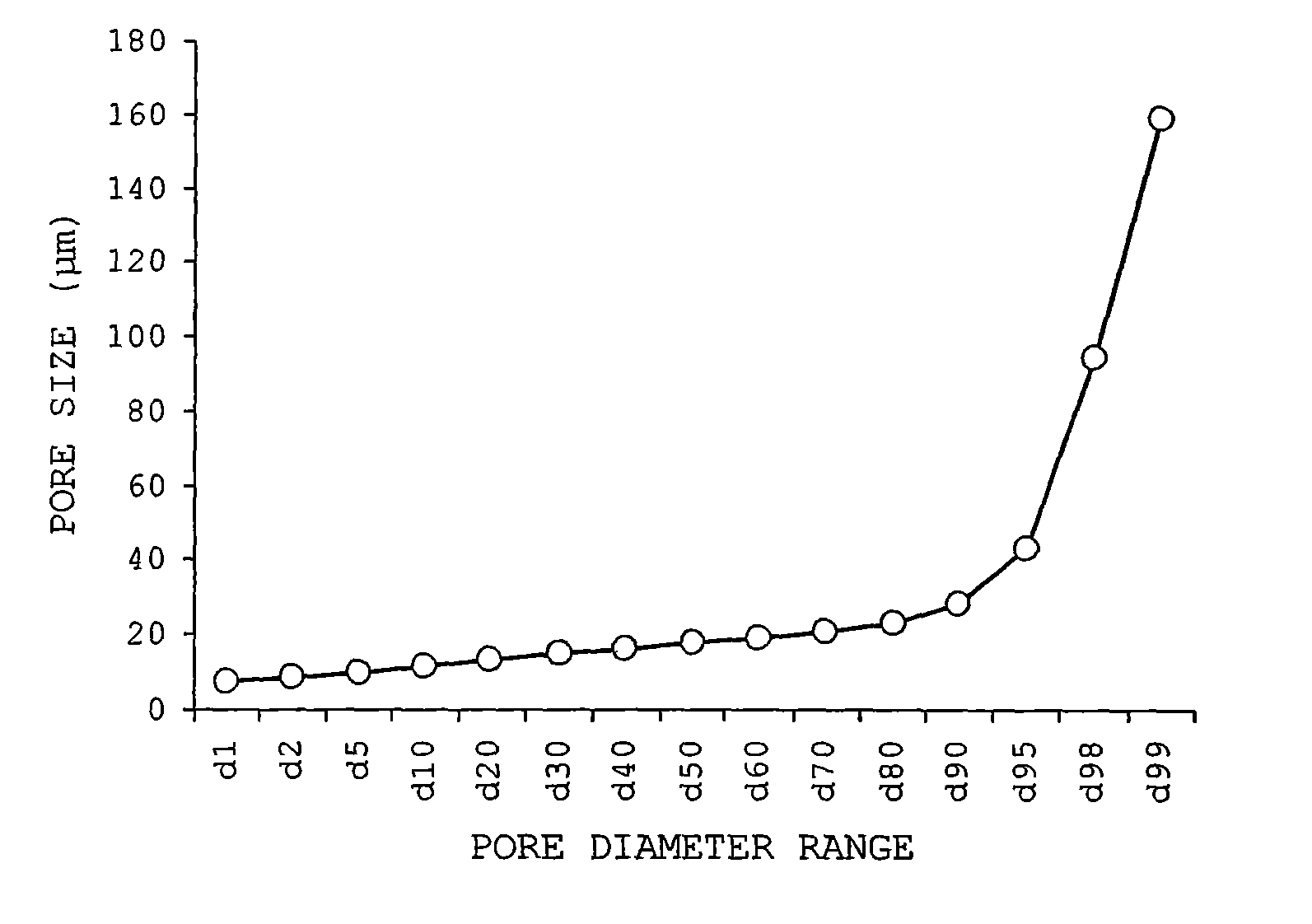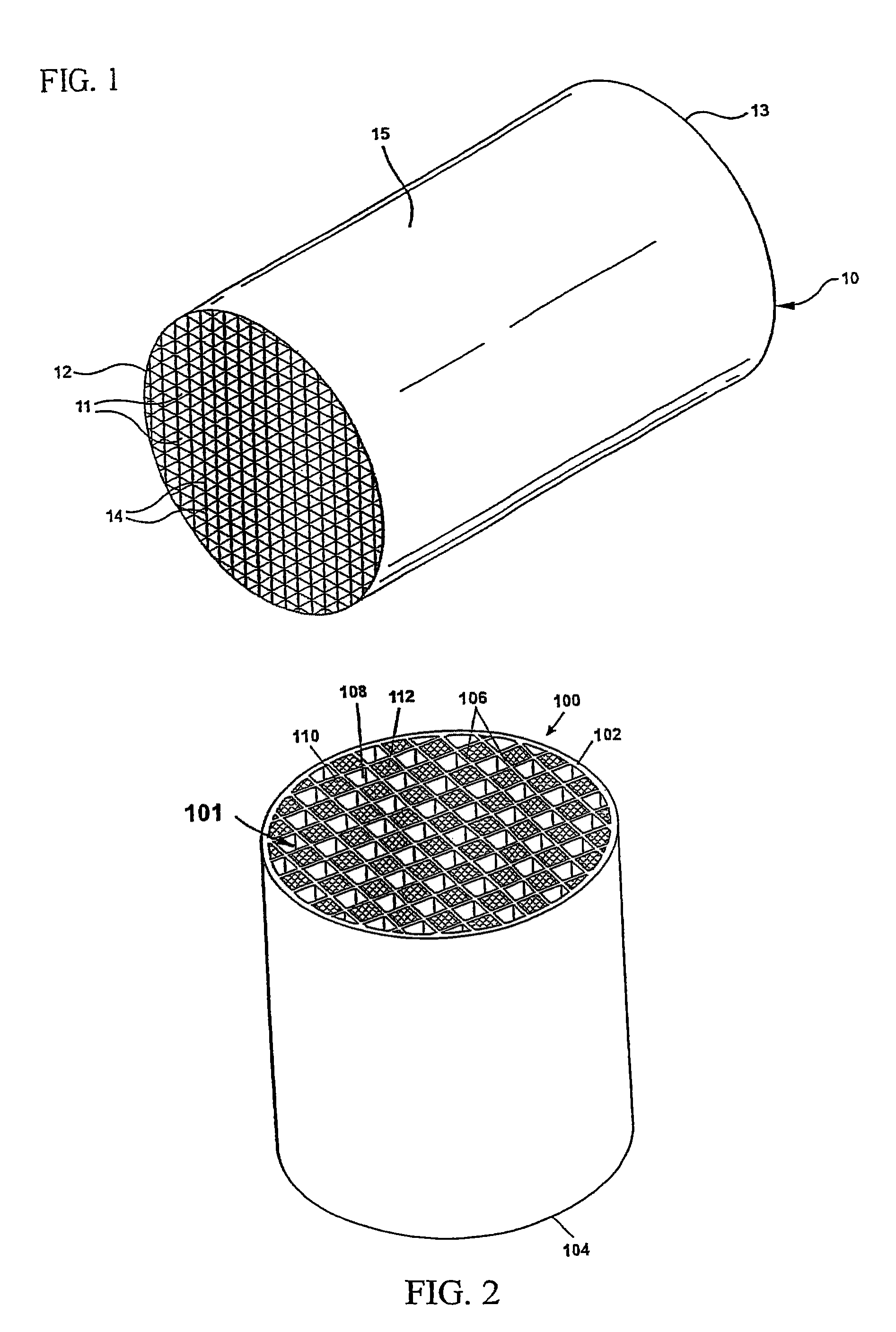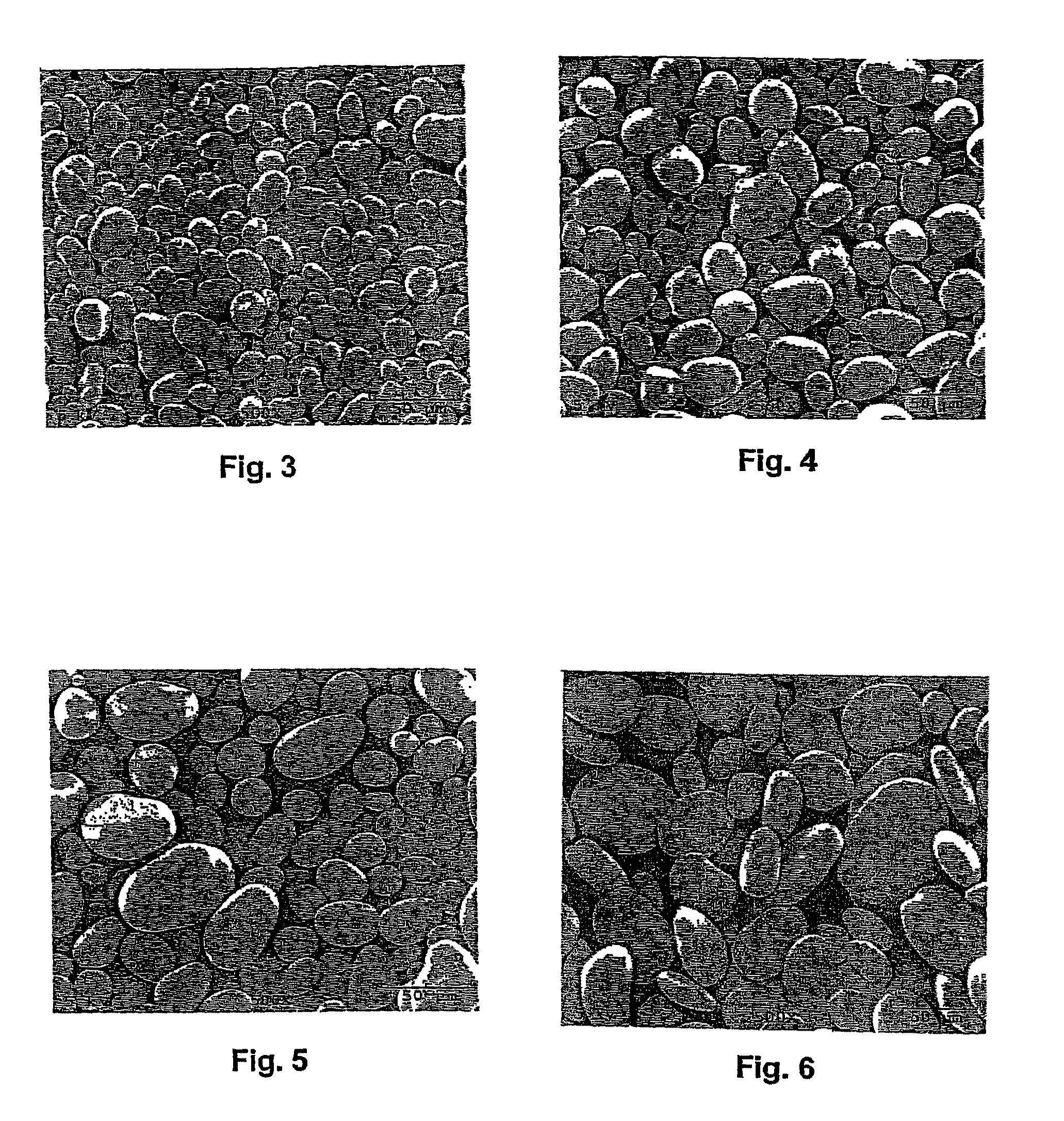Controlled pore size distribution porous ceramic honeycomb filter, honeycomb green body, batch mixture and manufacturing method therefor
a porous ceramic and filter technology, applied in ceramics, physical/chemical process catalysts, separation processes, etc., can solve the problems of low efficiency, high cost of sic, and high cost of sic, and achieve the effects of reducing wash-coated pressure drop, reducing production costs, and reducing production costs
- Summary
- Abstract
- Description
- Claims
- Application Information
AI Technical Summary
Benefits of technology
Problems solved by technology
Method used
Image
Examples
examples
[0065]As shown in FIG. 1, inventive examples of cordierite green bodies 10 were prepared by weighing out the dry ingredients including various examples of the inventive pore formers listed in Table 2 and forming aids such as a cellulosic material, for example methyl cellulose, and sodium stearate. The dry ingredients are then mixed with a solvent vehicle, such as with water, and kneaded in a preferably stainless steel muller to form an extrudable plastic mass. The plastic mass is then formed, preferably extruded, into a green body, as described in U.S. Pat. No. 5,205,991, for example. Upon being extruded, the cellular honeycomb green bodies are cut to a log length.
[0066]The extruded green body 10 includes a honeycomb structure having a plurality of generally parallel cell channels 11 formed, at least partially defined by intersecting cell walls 14 (otherwise referred to as “webs”) that extend from a first end 12 to a second end 13. Preferably, the green body 10 also includes an extr...
PUM
 Login to View More
Login to View More Abstract
Description
Claims
Application Information
 Login to View More
Login to View More - R&D
- Intellectual Property
- Life Sciences
- Materials
- Tech Scout
- Unparalleled Data Quality
- Higher Quality Content
- 60% Fewer Hallucinations
Browse by: Latest US Patents, China's latest patents, Technical Efficacy Thesaurus, Application Domain, Technology Topic, Popular Technical Reports.
© 2025 PatSnap. All rights reserved.Legal|Privacy policy|Modern Slavery Act Transparency Statement|Sitemap|About US| Contact US: help@patsnap.com



